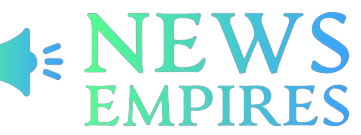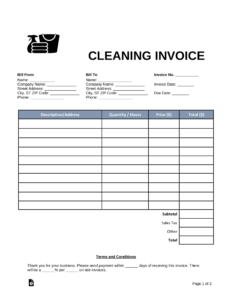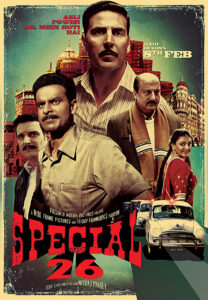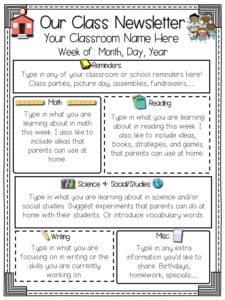In today’s digital age, where online platforms dominate the publishing industry, authors often overlook the power of traditional marketing techniques. One such technique is the book flyer, a printed promotional material that can significantly impact an author’s success. In this article, we will explore the various aspects of book flyers, their benefits, and how authors can utilize them effectively to reach their target audience.
What is a Book Flyer?
A book flyer, also known as a book promotional flyer or a book advertisement flyer, is a printed sheet of paper that serves as a marketing tool to promote a book. It typically includes relevant details about the book, such as the title, author, synopsis, and key selling points. Book flyers are designed to catch the attention of potential readers, providing them with essential information and enticing them to purchase or explore the book further.
The Importance of Book Flyers
While digital marketing strategies have gained immense popularity in recent years, book flyers continue to hold significance as a tangible and versatile promotional tool. Here are some reasons why book flyers are essential for authors:
1. Tangible Promotional Material:
In an era dominated by digital content, physical promotional materials like book flyers can provide a unique and memorable experience for potential readers. Holding a well-designed flyer in their hands can create a sense of connection and intrigue, making the book more memorable.
2. Targeted Reach:
Book flyers allow authors to target specific audiences effectively. By distributing flyers at relevant events or locations, authors can ensure that their promotional efforts reach individuals who are more likely to be interested in their book. This targeted approach can yield higher conversion rates compared to generic online advertisements.
3. Cost-Effective Marketing:
Book flyers are a cost-effective marketing tool, especially for authors with limited budgets. Designing and printing flyers is relatively affordable, and they can be distributed strategically without incurring significant expenses. This makes book flyers an attractive option, particularly for self-published authors or those with smaller marketing budgets.
4. Increased Visibility:
By distributing book flyers in various locations, such as bookstores, libraries, coffee shops, and community centers, authors can increase their book’s visibility. Flyers act as miniature billboards, catching the attention of potential readers and piquing their interest. This increased visibility can lead to enhanced book sales and recognition.
5. Supplementary Marketing Tool:
Book flyers can complement an author’s overall marketing strategy by reinforcing their online presence. By including website links, social media handles, or QR codes on the flyers, authors can direct readers to their online platforms, where they can find more information about the book, engage with the author, and make a purchase.
Designing an Effective Book Flyer
Designing an effective book flyer requires careful consideration of various elements. Here are some key factors to keep in mind:
1. Eye-Catching Visuals:
Visual appeal plays a crucial role in capturing the attention of potential readers. Use high-quality images, vibrant colors, and visually appealing fonts to create an eye-catching flyer. Ensure that the visuals align with the book’s genre, tone, and target audience.
2. Concise and Compelling Content:
Keep the content of the book flyer concise and compelling. Highlight the book’s unique selling points, such as awards, endorsements, or positive reviews. Include a brief synopsis that provides a glimpse into the story without giving away too much. Use persuasive language to create a sense of urgency or curiosity.
3. Clear Contact Information:
Include clear contact information on the flyer, such as the author’s website, email address, or social media handles. This allows interested readers to easily connect with the author, ask questions, or make a purchase.
4. Call to Action:
A strong call to action is essential to prompt potential readers to take the desired action, whether it’s purchasing the book, visiting the author’s website, or signing up for a newsletter. Use clear and concise language to guide readers towards the intended action.
5. Professional Printing:
Invest in professional printing services to ensure the quality and durability of your book flyers. High-quality printing can enhance the overall perception of your book and increase the likelihood of attracting potential readers.
Distribution Strategies for Book Flyers
Effective distribution strategies are vital for maximizing the impact of book flyers. Here are some strategies authors can employ:
1. Local Bookstores and Libraries:
Contact local bookstores and libraries to inquire about the possibility of displaying your book flyers. Many establishments have designated areas for author promotions or community bulletin boards where you can place your flyers.
2. Book Fairs and Literary Events:
Book fairs and literary events provide excellent opportunities for authors to distribute their book flyers to a targeted audience. Set up a booth or table at these events and engage with attendees, offering them flyers along with additional promotional materials.
3. Coffee Shops and Community Centers:
Place book flyers in coffee shops, community centers, and other public spaces that attract your target audience. Ensure that the flyer placement is in compliance with the establishment’s policies and seek permission if required.
4. Collaborate with Local Businesses:
Forge partnerships with local businesses that align with your book’s theme or genre. For example, if you’ve written a travel memoir, collaborate with a travel agency to display your flyers at their office or include them in their client packages.
5. Direct Mail Campaigns:
Consider incorporating book flyers into direct mail campaigns. By targeting specific demographics or mailing lists, authors can ensure that their flyers reach individuals who are more likely to be interested in their book.
Success Stories: Authors Who Utilized Book Flyers
To further emphasize the effectiveness of book flyers, let’s explore a few success stories of authors who employed this marketing tool:
1. John Green – “The Fault in Our Stars”:
John Green, the bestselling author of “The Fault in Our Stars,” utilized book flyers to increase the visibility of his book. He distributed flyers at various bookstores, libraries, and medical facilities, targeting both young adults and individuals interested in cancer-related topics. The strategic distribution of book flyers played a significant role in the book’s success.
2. J.K. Rowling – “Harry Potter” Series:
J.K. Rowling, the renowned author of the “Harry Potter” series, initially faced numerous rejections from publishers. To generate interest in her books, she printed book flyers and sent them to potential agents and publishers. This unique approach caught the attention of Bloomsbury, leading to the publication of the first “Harry Potter” book and subsequent global success.
3. Andy Weir – “The Martian”:
Andy Weir, the author of “The Martian,” self-published his book before it gained mainstream attention. As part of his marketing strategy, he distributed book flyers at science fiction conventions and events, targeting science and space enthusiasts. The flyers helped create buzz around the book, leading to its discovery by a major publishing house and subsequent movie adaptation.
Conclusion
In a rapidly evolving digital landscape, traditional marketing techniques like book flyers still possess undeniable value for authors. With their tangibility, targeted reach, cost-effectiveness, increased visibility, and ability to complement digital efforts, book flyers can significantly contribute to an author’s success. By carefully designing their flyers, employing effective distribution strategies, and drawing inspiration from success stories, authors can harness the power of book flyers to capture the attention of potential readers and propel their books towards greater recognition.
Frequently Asked Questions (FAQs)
1. Are book flyers still effective in the digital age?
Yes, book flyers can be highly effective in the digital age. While online marketing strategies are essential, book flyers provide a tangible and memorable experience for potential readers.
2. How can I make my book flyer stand out?
To make your book flyer stand out, focus on visually appealing designs, concise and compelling content, clear contact information, and a strong call to action. Incorporate unique selling points and use persuasive language to create intrigue.
3. Is professional printing necessary for book flyers?
Professional printing is highly recommended for book flyers. High-quality printing enhances the perception of your book and increases the likelihood of attracting potential readers.
4. Can I distribute book flyers at bookstores and libraries?
Yes, many bookstores and libraries have designated areas for author promotions or community bulletin boards where you can place your book flyers. Contact them to inquire about the possibilities.
5. How can book flyers complement my online marketing efforts?
By including website links, social media handles, or QR codes on your book flyers, you can direct readers to your online platforms, where they can find more information about your book, engage with you, and make a purchase.
Summary
Book flyers are a powerful marketing tool that can significantly impact an author’s success.They provide a tangible and memorable experience for potential readers in a digital age dominated by online platforms. Book flyers offer targeted reach, allowing authors to connect with specific audiences effectively. They are also cost-effective, making them an attractive option for authors with limited budgets. By increasing visibility and serving as a supplementary marketing tool, book flyers can enhance an author’s overall marketing strategy.
When designing an effective book flyer, several key factors should be kept in mind. Eye-catching visuals play a crucial role in capturing the attention of potential readers. Using high-quality images, vibrant colors, and visually appealing fonts can make a flyer stand out. The content of the flyer should be concise and compelling, highlighting the book’s unique selling points and providing a brief synopsis that generates curiosity. Clear contact information and a strong call to action are vital to prompt readers to take the desired action.
Investing in professional printing services is recommended to ensure the quality and durability of book flyers. High-quality printing can enhance the overall perception of the book and increase the likelihood of attracting potential readers.
In terms of distribution strategies, authors have various options to maximize the impact of their book flyers. Local bookstores and libraries are ideal places to display flyers, as they attract individuals interested in reading and discovering new books. Book fairs and literary events offer opportunities to engage with a targeted audience directly. Coffee shops, community centers, and collaborating with local businesses that align with the book’s theme or genre are also effective distribution strategies. Additionally, authors can consider incorporating book flyers into direct mail campaigns to reach specific demographics or mailing lists.
To further emphasize the effectiveness of book flyers, let’s explore a few success stories of authors who utilized this marketing tool. John Green, the bestselling author of “The Fault in Our Stars,” strategically distributed book flyers to increase the visibility of his book. J.K. Rowling, the renowned author of the “Harry Potter” series, utilized book flyers to generate interest and catch the attention of publishers. Andy Weir, the author of “The Martian,” distributed book flyers at science fiction conventions and events, sparking buzz around his self-published book.
In conclusion, book flyers continue to hold significance as a powerful marketing tool for authors. Their tangibility, targeted reach, cost-effectiveness, increased visibility, and ability to complement online marketing efforts make them a valuable asset in an author’s promotional strategy. By designing compelling flyers, employing effective distribution strategies, and drawing inspiration from success stories, authors can harness the power of book flyers to capture the attention of potential readers and propel their books towards greater recognition.
Frequently Asked Questions (FAQs)
1. Are book flyers still effective in the digital age?
Yes, book flyers can be highly effective in the digital age. While online marketing strategies are essential, book flyers provide a tangible and memorable experience for potential readers.
2. How can I make my book flyer stand out?
To make your book flyer stand out, focus on visually appealing designs, concise and compelling content, clear contact information, and a strong call to action. Incorporate unique selling points and use persuasive language to create intrigue.
3. Is professional printing necessary for book flyers?
Professional printing is highly recommended for book flyers. High-quality printing enhances the perception of your book and increases the likelihood of attracting potential readers.
4. Can I distribute book flyers at bookstores and libraries?
Yes, many bookstores and libraries have designated areas for author promotions or community bulletin boards where you can place your book flyers. Contact them to inquire about the possibilities.
5. How can book flyers complement my online marketing efforts?
By including website links, social media handles, or QR codes on your book flyers, you can direct readers to your online platforms, where they can find more information about your book, engage with you, and make a purchase.
Summary
Book flyers are a powerful marketing tool that can significantly impact an author’s success. They provide a tangible and memorable experience for potential readers in a digital age dominated by online platforms. Book flyers offer targeted reach, cost-effective marketing, increased visibility, and can complement an author’s online presence. By carefully designing book flyers, employing effective distribution strategies, and drawing inspiration from success stories, authors can harness their power to capture the attention of potential readers and propel their books towards greater recognition.





